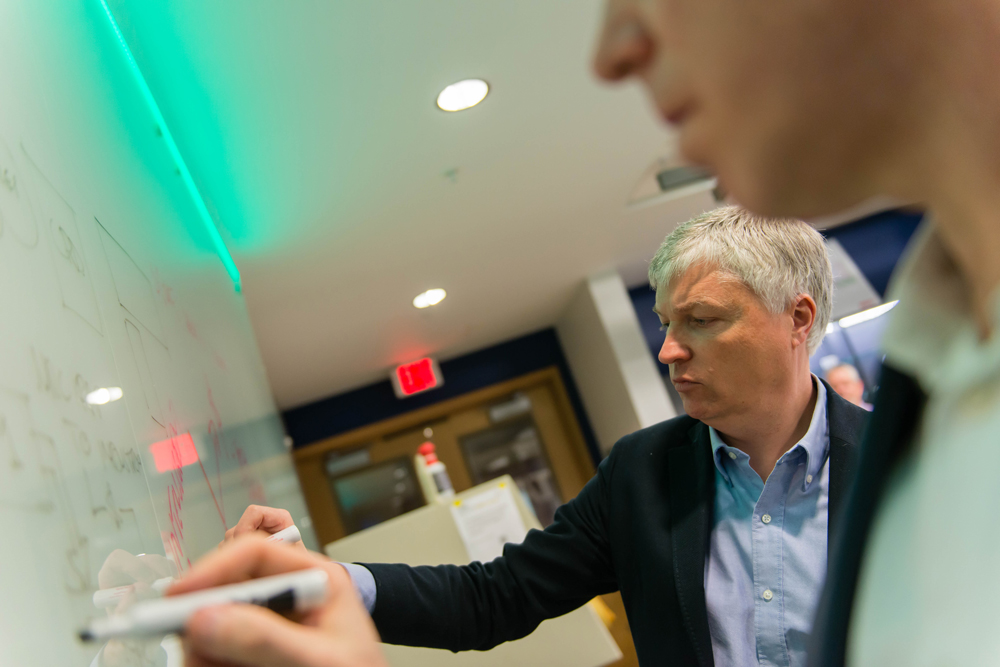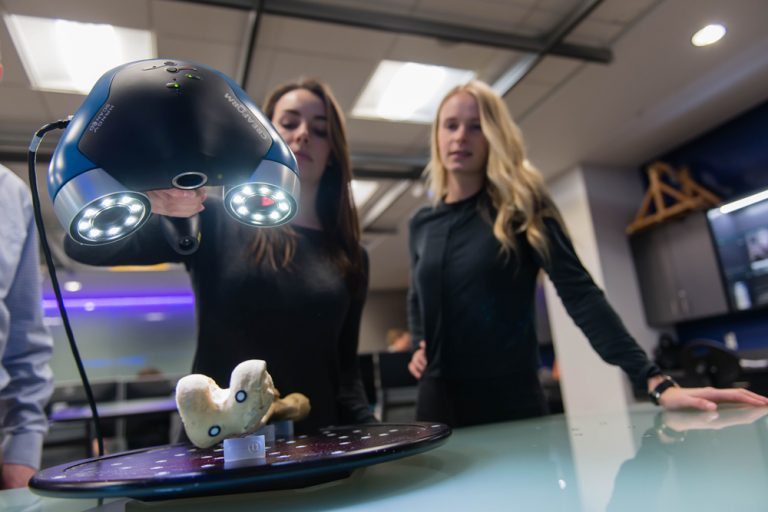Director Q&A

Dr. Keith Culver is the Director of the UBC Survive and Thrive Applied Research Initiative (STAR), based at UBC’s Okanagan Campus. UBC STAR cultivates collaboration to improve human lives and advance economic development and job creation in Western Canada.
“STAR connects organizations with UBC researchers and international partners to create solutions to human performance challenges and advance innovation in safety and security contexts.”
About the Director
Keith began his career as a legal theorist, concerned with questions about the nature of legal obligation and the role of legal institutions as means to conflict resolution. His interest in law as a tool for social problem solving in environment, technology and security, led him to a number of interdisciplinary adventures. Before coming to UBC in 2011, he held the International Chair in Eco-Innovation at the UniverSud Paris consortium of universities.
In the interview below, Dr. Culver describes his experience leading the UBC STAR Initiative.
Q: As the director of UBC STAR what are your main day-to-day responsibilities?
 K: I’m a bit like a symphony conductor. I coach dedicated STAR staff, faculty and student researchers from several disciplines to agreed upon strategies. As a director I don’t so much tell people what to do, as I try to ensure that we reach collective synergies and don’t fall into working in silos. Day-to-day, I participate in activities occurring on both UBC campuses in various faculties and departments. I communicate the nature of STAR to researchers and external partners new to STAR and coordinate meetings across departments and partners. I’m also involved with co-creating research questions and collaborating on existing projects. When an initiative is spread across organizations and places, there can never be too much communication.
K: I’m a bit like a symphony conductor. I coach dedicated STAR staff, faculty and student researchers from several disciplines to agreed upon strategies. As a director I don’t so much tell people what to do, as I try to ensure that we reach collective synergies and don’t fall into working in silos. Day-to-day, I participate in activities occurring on both UBC campuses in various faculties and departments. I communicate the nature of STAR to researchers and external partners new to STAR and coordinate meetings across departments and partners. I’m also involved with co-creating research questions and collaborating on existing projects. When an initiative is spread across organizations and places, there can never be too much communication.
Q: Much of the work at UBC STAR is in reaction to human performance challenges in sport, health and defence. What steps does STAR take to reach solutions to these issues?
K: UBC STAR research is partner-engaged and problem-oriented — so much of what we do is applied research seeking to respond to a challenge raised by a partner. We’re good at working together to ask the right questions. The real art in the STAR initiative lies in the way we work with partners one on one and in larger symposia to map out challenges in a particular area of human performance. This allows us to identify steps we can take together from various disciplinary perspectives to overcome those challenges.
“The real art in the STAR initiative lies in the way we work with partners one on one and in larger symposia to map out challenges in a particular area of human performance.”
Q: What kind of projects is UBC STAR working on right now?
K: Some of our most recognizable work is in helmets and head projection, with applications across sport, health and defence. We’re also in the middle of a process where we are engaging willing academics and non-academic partners to think about emerging research questions in ‘before and after disaster’ situations. We’re trying to think about how our materials research capacity and research based in supportive decision making can help to enable better human performance far in advance of disasters, and long after the initial crisis has received first response. From new techniques in strategic foresight through better understanding of PTSD and factors affecting community resilience, we hope to build an interdisciplinary hub identifying the right questions to ask and building the right partnerships to answer those questions.
“I think we’re going to see very rapid developments in simulation technologies in association with sensor technologies. This will enable us to respond earlier than ever before to signs of incipient disaster, and we’ll be able to respond on the back of rapidly composed and compared scenarios.”
Q: What role do you think surveillance and simulation have in mitigating disasters? Who needs to work together in these disaster scenarios?
K: We are in the very early days of the Internet of things, and integration of artificial intelligence into a world where cyberspace and the physical world overlap. I think we’re going to see very rapid developments in simulation technologies in association with sensor technologies. This will enable us to respond earlier than ever before to signs of incipient disaster, and we’ll be able to respond on the back of rapidly composed and compared scenarios.
Among a certain group of researchers, this has the status of fact and the rest is just detail. From my perspective as a legal theorist, I see a complex road ahead as we try to develop reliable technologies governed by the right standards while introducing it in the right way to those who will use these technologies.
The best way to get university-developed knowledge into practice will be through partnership with users, from beginning to end of our research and development processes. What I think will be surprising is the extent to which users of these technologies will be non-traditional, for example, the rise of crowd-sourcing of surveillance, simulation and adaptive response to disaster.
Q: What is one exciting international collaboration that’s taken place through UBC STAR?
K: We have a wonderful relationship with colleagues at Imperial College London. Their work on a material called Armourgel has offered us new ways to think about mitigating the effects of various kinds of injury — from head injuries suffered by athletes and soldiers, to hip injuries suffered by elderly persons who fall.
Q: How can students get involved with the STAR initiative?
K: We’re welcoming increasing numbers of undergraduate and graduate students into STAR facilities for work in particular courses — our 3D modelling capacity is helpful to Kinesiology students learning anatomy, for example.
And as research and teaching are increasingly integrated at graduate levels, students working with faculty who participate in STAR-associated projects have plenty of opportunities to work in our facilities and meet our external partners.
making an impact
As Keith puts it, STAR “translates research results into practice.” As the director, his duty is to reflect on STAR’s structure and continue to forge new connections between the university and the broader community.
He believes that the creation of this kind of research initiative within the university is an opportunity to make professional contributions that achieve immediate practical impacts and improve human lives. This notion leads STAR into exciting new territory.
From the Okanagan all the way to London, England, it’s clear STAR’s efforts have begun to flourish across the globe.
